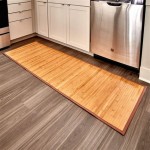Vinyl flooring is a popular choice for many homeowners due to its affordability, durability, and ease of installation. However, to ensure it lasts and looks its best, it is important to prepare the subfloor correctly and choose the right underlayment. To learn more about what to put under vinyl flooring and the role of underlayment, read on.
What is Underlayment?
Underlayment is an additional layer between the subfloor and the vinyl flooring. It acts as a barrier, protecting the flooring from moisture and providing added insulation. The type of underlayment you choose will depend on the type of subfloor and the type of vinyl flooring you have. Generally, the thicker the underlayment, the better.
Types of Underlayment for Vinyl Flooring
The most common types of underlayment for vinyl flooring are foam, cork, and rubber. Foam is the most affordable option and provides a good level of protection and insulation. Cork is more expensive but is more durable and offers better sound and heat insulation. Rubber is the most expensive option, but it is the most durable and provides excellent sound and heat insulation.
Preparing the Subfloor
Before installing the vinyl flooring, it is important to prepare the subfloor. This includes inspecting the subfloor for any signs of moisture, damage, or unevenness. If any of these issues are found, they should be rectified before installing the flooring. The subfloor should also be cleaned and vacuumed to remove any dirt and debris.
Installing the Underlayment
Once the subfloor has been prepared, the underlayment can be installed. The underlayment should be cut to size and laid over the subfloor, making sure to overlap the seams. To ensure the underlayment is secure, it should be stapled or nailed to the subfloor. Once the underlayment has been installed, the vinyl flooring can be laid.
Benefits of Underlayment
Using an underlayment for vinyl flooring provides many benefits, including:
- Added insulation, reducing heat loss and providing a more comfortable floor temperature.
- Improved sound insulation, reducing noise from footfall and other sources.
- Added cushioning, making the floor more comfortable to walk on.
- Protection from moisture, preventing the vinyl flooring from becoming damaged.
- Improved durability, making the vinyl flooring last longer.
Conclusion
When installing vinyl flooring, it is important to choose the right underlayment and prepare the subfloor correctly. Underlayment provides many benefits, including added insulation, improved sound insulation, added cushioning, protection from moisture, and improved durability. By choosing the right underlayment and preparing the subfloor correctly, you will ensure your vinyl flooring lasts and looks its best.















Related Posts








